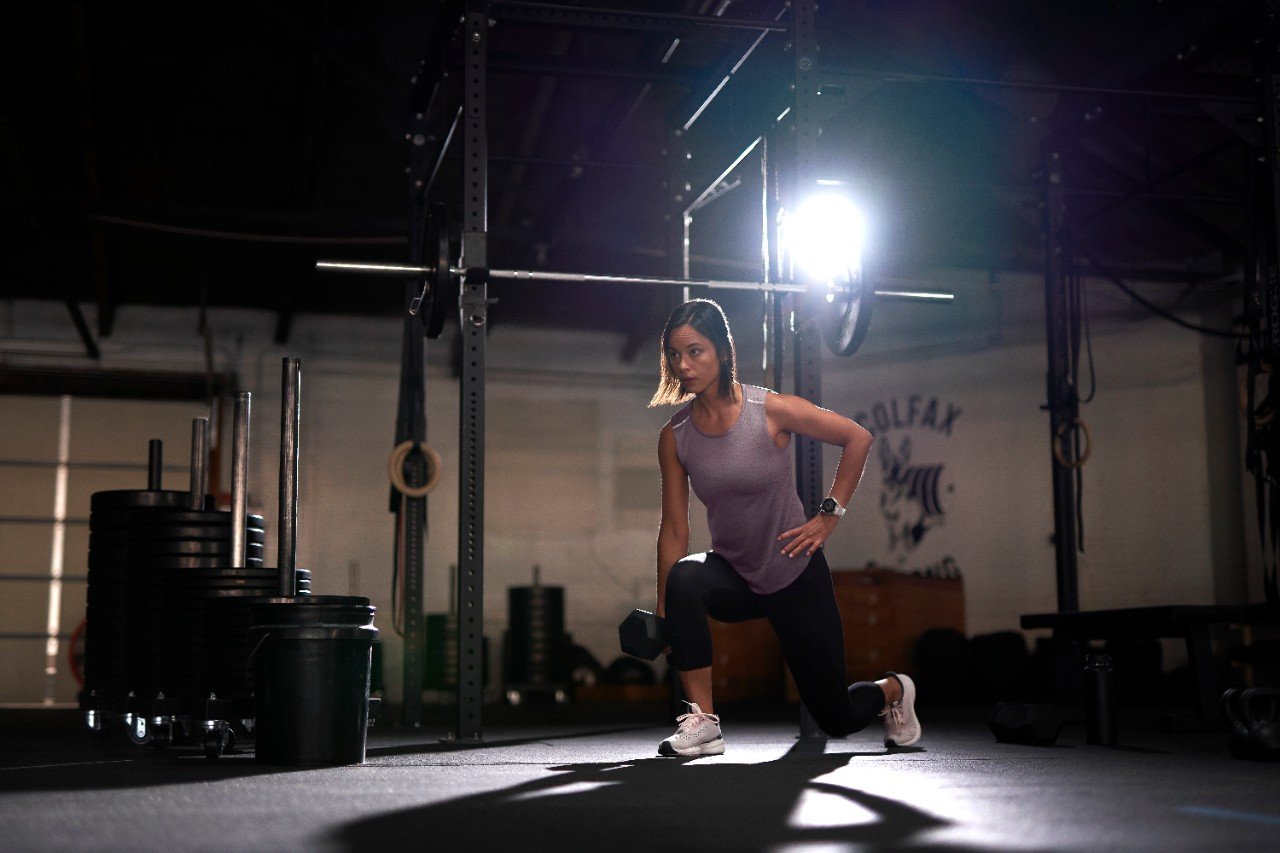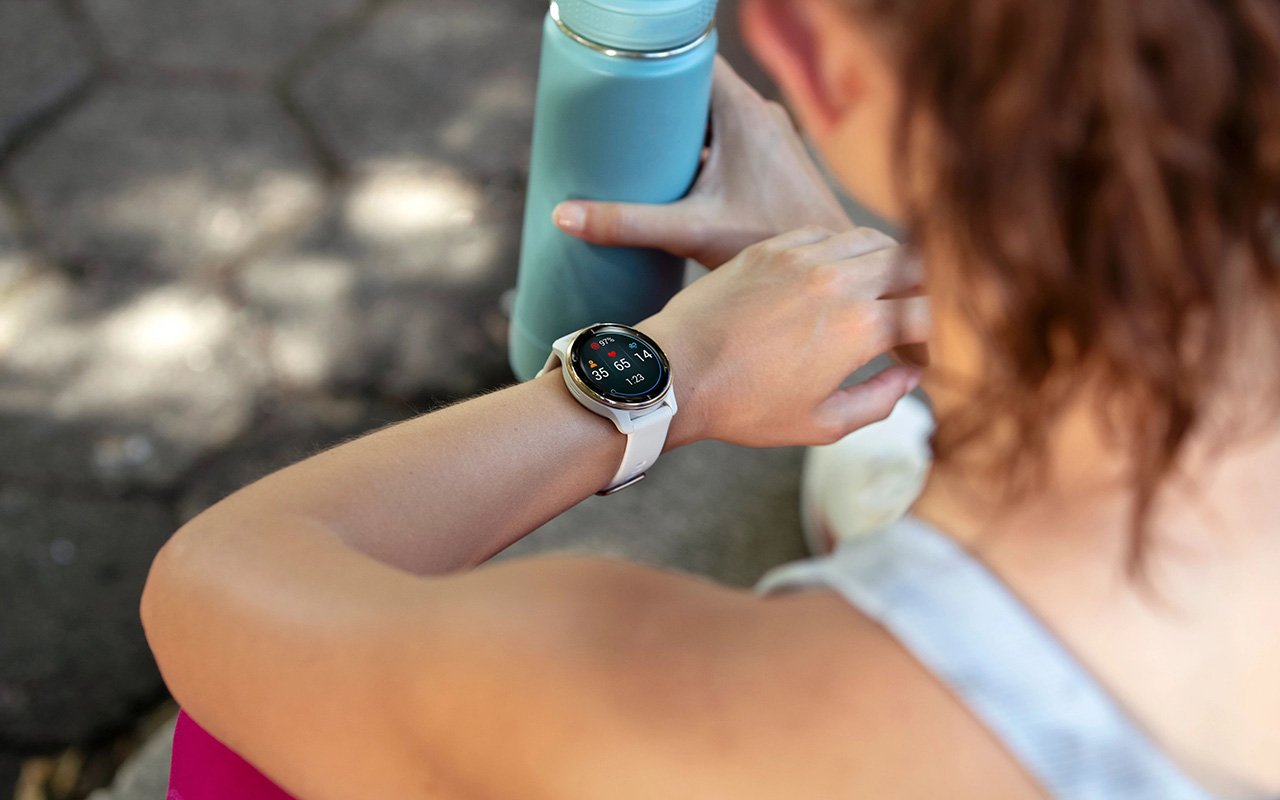
Strength Training 101: A Simple Guide on How to Get Started
The National Academy of Sports Medicine trusts Garmin smartwatches to track their strength training progress. Below they’ve provided some tips for getting started.
Starting a strength training routine can be challenging for beginners. How and where to begin can be unnerving, and online searches can often be overwhelming, confusing, and worse yet, inaccurate. That’s why Garmin has teamed up with the National Academy of Sports Medicine (NASM) to bring you simple, easy-to-follow strength training tips to kick off your fitness journey. Aligning with an evidence-based training plan, smart programming and adopting the right mindset can translate to success in attaining goals. Allow these three rules to guide you when beginning a strength training program:
1. Keep it simple.
2. Be consistent.
3. Add some variety.
Keep It Simple
The best thing to do when starting out is to ensure a beginner strength training program is not only safe and effective — but also simple. NASM developed a fitness training system called the NASM Optimum Performance Training® Model or the OPT™ Model that can help with this — particularly when you’re wearing a Garmin smartwatch with a built-in strength training activity. This model is among the best training methods in the industry and is based on scientific evidence and principles that advance individuals through three main training levels: stabilization, strength and power. When the model is drilled down a bit, there are five specific progressive training phases (i.e., stabilization endurance, strength endurance, muscular development, maximal strength and power). The OPT Model is a globally trusted system utilized for more than 20 years, and when it comes to understanding where to start, it is the perfect resource. Later, it can be referenced on how to advance as things get easier or goals change.
The first level, called “stabilization,” is a great place for beginners to start their strength training journey because it builds a good foundation in correct form and technique, which can lead to strength gains. The second level is called “strength” and involves building on the first; it offers the chance to lift heavier weights and incorporate higher training intensities. “Power” is the third level that focuses on using high-force and high-velocity exercises — something that not only athletes need, but everyone can benefit from when appropriately programmed. This journey, however, is not necessarily linear for everyone. Beginners do well when beginning with stabilization training and progressing over time from there. Others may find it more appropriate to incorporate other phases of training, depending on their experience, fitness level and training goals.
Stabilization focuses on three main adaptations or outcomes: improving movement patterns, enhancing the body’s stabilization and building local muscular endurance. This phase prepares the body for higher levels of training in the strength phases. Strength is defined as your body’s nervous and muscular systems working together to produce tension with the goal of overcoming a force (Sutton, 2022). So when performing a push-up, for example, certain muscles (mainly the chest, shoulders and arms) produce tension to overcome the force of NOT falling flat on your face! The same concept occurs when you squat or lunge down to tie your shoes. What allows you to return to a standing position are your leg muscles producing a force to help you stand up, so you are not in a perpetual tying-your-shoes position.
Understanding what defines stabilization and strength training can help you select exercises. In many cases, the two levels of stabilization and strength exercises can be combined in a training program and adjusted to your individual fitness level needs. The following incorporates a mix of stabilization and strength-building exercises for a total-body workout that can be performed anywhere, including at home. Review the list of recommended exercises below and make a note of each exercise’s target areas and equipment needs. Watch the videos to get a good idea of space and equipment requirements, as well as to understand what each move entails. Remember, nailing good form and technique right from the start is very important. All of these exercises are also available within the Garmin Connect™ app, so if you’re a Garmin smartwatch user, you can build this workout within the Garmin Connect platform and send it directly to your watch to follow the instructions on the watch face. Begin with the following exercises:
- Push-ups: Chest, shoulders and triceps; bodyweight only
- Squats: Glutes, hamstrings, quads and calves; bodyweight to start
- Planks: Core muscles, including transverse abdominus; bodyweight
- Bird-dogs (or Quadrupeds): Multifidus, including other deep spinal muscles; bodyweight
- Stability Ball Leg Curl: Hamstrings and glutes; stability ball
- Standing Rows: Back and biceps; elastic resistance
- Scaptions: Shoulders and traps; light dumbbells
- Triceps Extensions: Triceps; light dumbbells
- Biceps Curls: Biceps; light dumbbells
Acute variables, also known as “training variables,” are components of a training program that specify how each exercise is performed (e.g., sets, repetitions, tempo, rest, etc.). These are the elements that determine the amount of stress placed on the body during an exercise session and can be adjusted to the individual’s fitness level needs. The recommended protocol for this program designed for beginners aligns with stabilization and muscular endurance training adaptations. In terms of training intensity for the suggested program, if you can complete 20 repetitions with the final three to five being challenging, you are at the appropriate resistance level for this training adaptation. When it starts to get easier, it may be time to move on and incorporate different training variables. Suggested frequency and duration for the workout provided, along with reps, sets, tempo and rest include the following:
- Frequency: 2 to 3 days per week
- Duration: 30 to 45 minutes (NOTE: Depends on fitness level and how many sets are completed.)
- Sets: 1 to 3
- Repetitions: 12 to 20 (or higher)
- Rep Tempo: Moderate (i.e., not turtle pace, but not rabbit pace, either)
- Rest: 0 to 90 seconds (NOTE: As your conditioning improves, rest time may decrease.)
Be Consistent
If you want to see results and reap the benefits of strength training, you must be consistent. Perform the workout for at least two to six weeks (Sutton, 2022). This timeframe allows the body to adapt to training demands. You may feel a little sore, tired, and frankly, like you do not want to do it at times. However, always keep your end goal in mind — it can help keep you going. Make sure the goal is realistic and keep it in check. Eventually, your body will reach a plateau, and that is when variety needs to be added.
Add Some Variety
Your body is adaptable (McGill & Montel, 2019). This means that eventually you cannot continue with the same routine if you expect to see continued results. It does not necessarily mean purchasing more equipment or learning a new routine. It can simply be adding another movement to the existing exercise. For example, the plank exercise can be made more challenging by adding movements with the legs, like drawing in a knee to the chest and alternating sides. When the squat exercise feels easier, try slowing down or increasing resistance — or both. The scaption exercise can be more advanced by alternating the arms instead of using both arms simultaneously. There is a plethora of ways to add variety and avoid plateauing. Start simple and look for ways to progress by working with an NASM-CPT personal trainer or exploring some more via NASM’s blog section where there is more detailed information about advancing safely.
Remember, before beginning any training program, consult with your health care practitioner for clearance. As you begin any training program, also remember to keep it simple as you get started — you can get fancier later. Be consistent with your workouts and once things start to feel easier, explore progressions by using some variety. Advancing to the next level takes some time and dedication, but if you remain steadfast and stay focused on your goal (and your “why”), it will all add up to higher levels of fitness and being able to do all the things you love to do … even better.
References
Sutton, B. G. (2022). NASM Essentials of Personal Fitness Training. 7th ed. Jones & Bartlett Learning
McGill, E.A & Montel, I. (2019). NASM Essentials of Sports Performance Training. 2nd ed. Jones & Bartlett Learning







